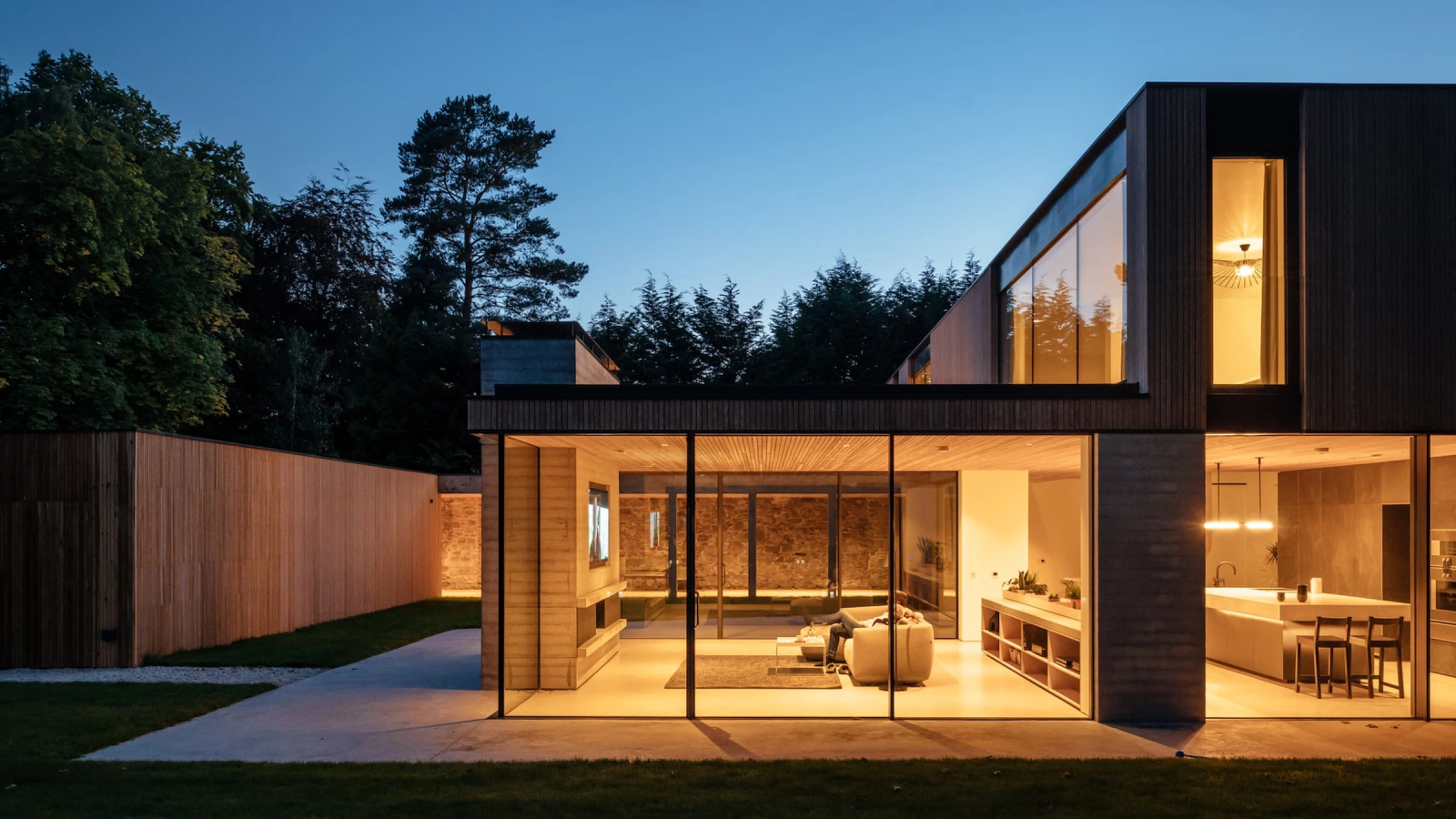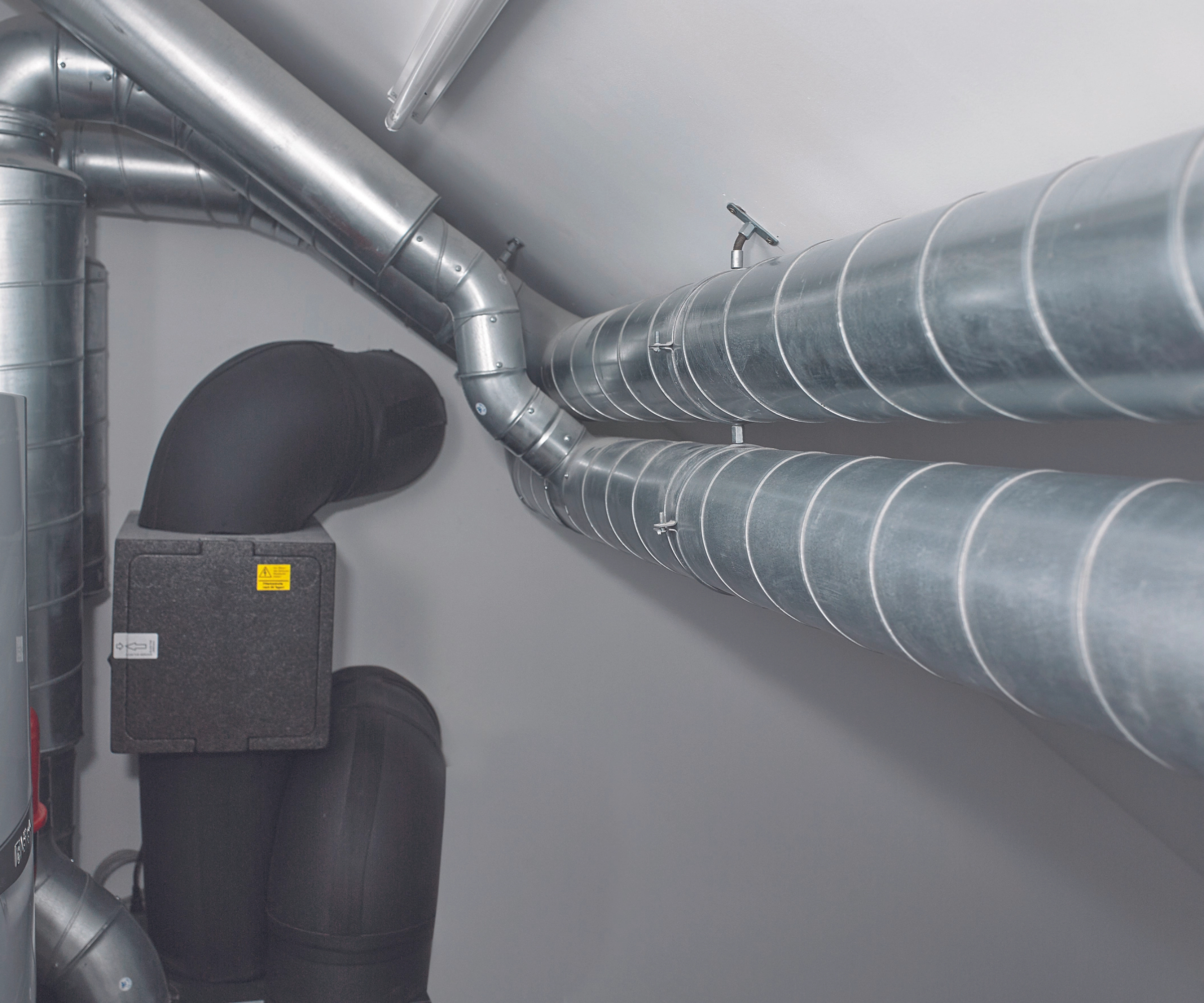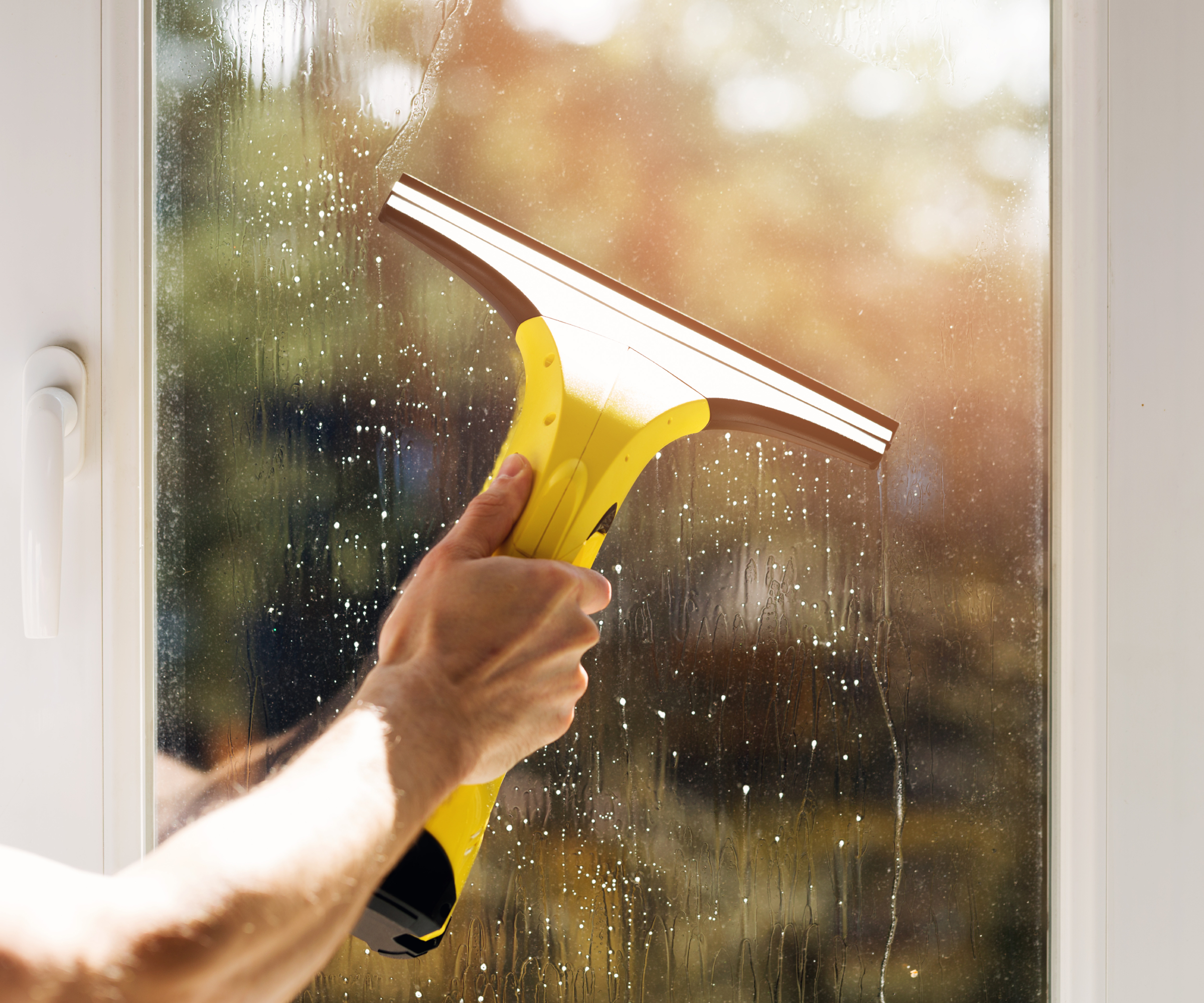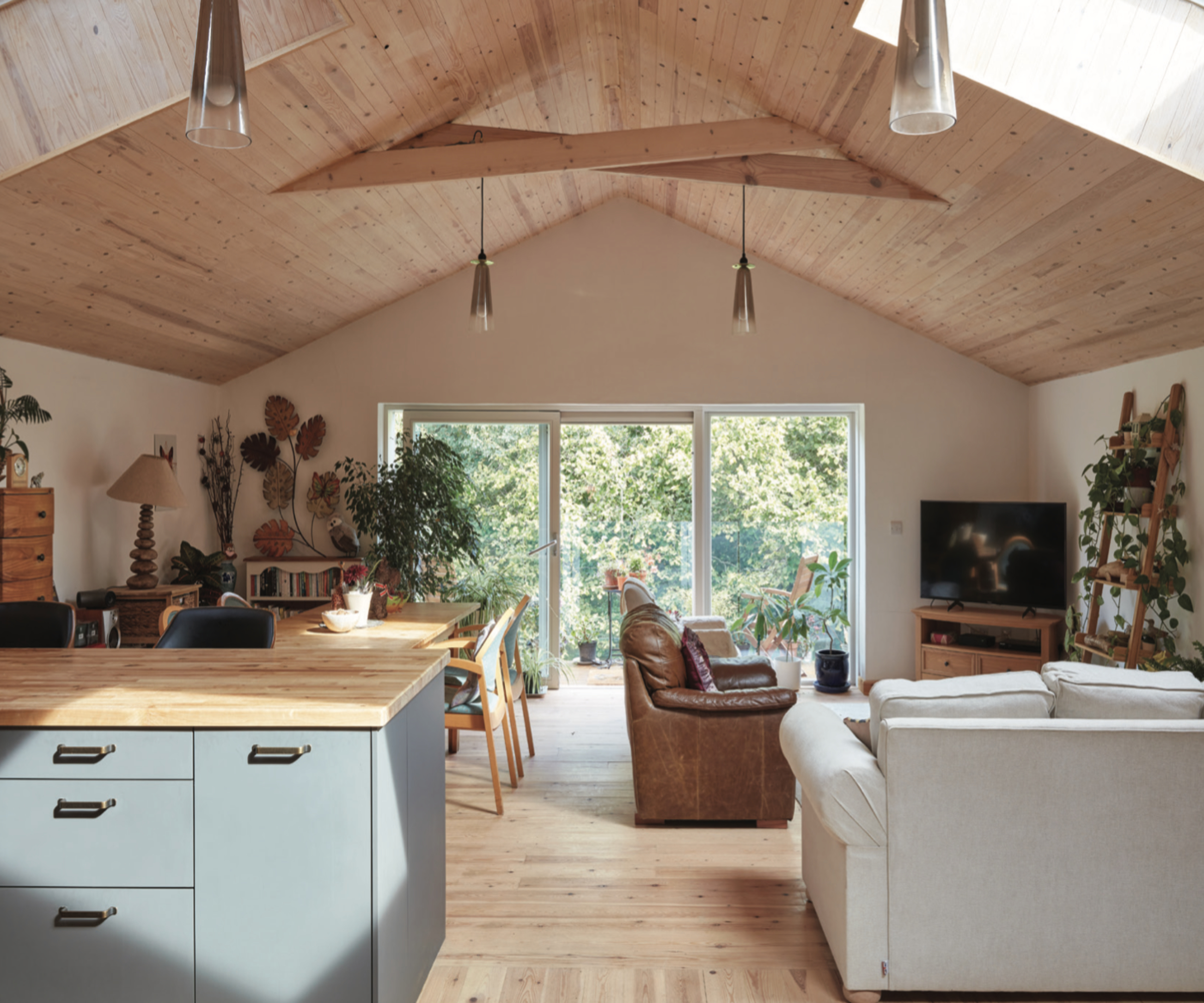An expert guide to MVHR: everything you need to know about this ventilation system
Mechanical ventilation with heat recovery (MVHR) is considered essential in a modern airtight home. Helping to improve airflow and energy efficiency, experts explain what's involved if you're considering it for your new build or refurb

MVHR (mechanical ventilation with heat recovery) systems have become more mainstream over recent years, for a number of reasons.
As we build better insulated, more airtight homes, the need for suitably designed ventilation systems that deliver fresh air, and go beyond more traditional methods such as trickle vents and bathroom and kitchen extractors, has become more important, as has the need to meet Building Regulations requirements relating to the matter of energy efficiency.
Hand in hand with this is increasing awareness of how the indoor air quality in our homes and workplaces can impact our health and wellbeing.
Here, we delve into exactly what is an MVHR system, how it works and what you need to take into account if you are considering one.
What is MVHR?
Home ventilation is necessary for a healthy living environment and a mechanical ventilation system is one way of achieving this.
"MVHR is a whole home system designed to provide fresh air to the home, whilst retaining heat from the outgoing stale air," explains Russell Smith, founder and Managing Director of Ecofurb.
"It works by extracting warm and moist air from wet rooms, like bathrooms and kitchens, passing it through a heat exchanger to capture the heat, and then using that heat to warm incoming fresh air and distribute it into the living areas of the home. This improves indoor air quality as well as enhancing energy efficiency."
Bring your dream home to life with expert advice, how to guides and design inspiration. Sign up for our newsletter and get two free tickets to a Homebuilding & Renovating Show near you.
It is designed to run continuously all year round, and with an MVHR system, the basic process is that warm, stale air is passed through a heat exchanger, the heat extracted is then used to warm incoming fresh air which has been drawn in from outside and filtered.
The pre-warmed, filtered fresh air is then delivered (moisture and cooking smell-free) into regular living areas such as bedrooms and living rooms, through a ducting system with outlets in the ceilings of each room.

Russell Smith is the founder and Managing Director of Ecofurb, a service dedicated to providing impartial, personalised advice on home energy efficiency retrofits.
How does MVHR work?
David Hilton, MVHR installer and Homebuilding & Renovating's energy efficiency expert, explains in more detail how an MVHR system works.
"Whole house MVHR consists of two independent ducted airflows, each with its own fan. The extract fan extracts the stale humid air from the wet rooms (bathrooms, kitchen, utility, etc.) and passes it over a heat exchange matrix – where it recovers around 80 per cent of the heat from the stale air – before discharging it to the outside.
"The second fan draws fresh air from outside, filters it to get rid of pollution and airborne allergens, then passes it over the heat exchange matrix in order to supply pre-warmed fresh air to all the living areas and bedrooms."
In order for the system to work at its best, there are a number of considerations regarding ducting size and insulation that need to be taken into account.
Clearly ducting can’t be put just anywhere and needs to be properly designed into the overall structure of your home, and "any ducting that passes through ‘cold’ spaces (like a cold roof loft) will need to be insulated to optimise the efficiency of the system," adds David Hilton.

With more than 35 years of expertise, David is a seasoned renewables and ventilation installer, recognised for his longstanding contributions to Homebuilding & Renovating magazine. He is also a regular guest speaker at the Homebuilding & Renovating Shows. With a Masters degree in Sustainable Architecture, David is as an authoritative figure in sustainable building and energy efficiency.
Key considerations when installing MVHR
"When it comes to MVHR installation you have a number of options depending on system choice and duct routes," begins David Hilton. "The electrical work and commissioning need to be carried out by a qualified engineer, but if you are trying to save costs the ductwork can be installed by anyone who is confident enough to follow the drawings and make a good job of the joints. As long as a member of the design team has commissioned the system, the integrity of the work will be verified and the design liability will be signed off."
Or, you could opt for a full installation package from the MVHR supplier. "In this scenario, make sure that the ducts are clearly detailed on the drawings (as this avoids other trades all aiming for the same space), the installation schedule dates are noted and that they really are going to do all the works," advises David.
"There is a lot of ductwork to accommodate and in order to make it discreet you really want to hide it away in open web floor/ceiling joists, studwork or loft areas," he adds. As such, installation tends to be easier, cheaper and less disruptive when building a new home.
Retrofitting MVHR to older properties is possible but there are some problems: hiding the ducting within the fabric of the building is usually problematic and older properties tend to be less airtight.
Retrofitting is also more expensive than installing a MVHR system in a new build, so it could well be that the cost of overcoming the aesthetic problems and getting the building sufficiently airtight outweighs the potential benefit.

MVHR and the importance of being airtight
Building Regulations Part L, which concerns itself with the conservation of fuel and power in new builds, sets a maximum airtightness level, with Passivhaus said to be the best energy efficiency building standard currently available, requiring an airtightness of 0.6m³/hr/m² or less at 50Pa.
There is no question that airtightness is a key factor in achieving thermally efficient houses. Airtightness stops heat escaping from the house and stops cold air entering in the form of draughts.
MVHR works by extracting air from a room and replacing it with a similar volume of warmed air. If we imagine a situation where the room is very leaky, the extraction will draw in cold, outside air, outweighing the value of the warmed air being introduced. So clearly there is a level of airtightness at which MVHR will start to be effective.
That is generally accepted to be 5m³/hr/m². The more airtight the house, the more effective the MVHR system will be, and again it is generally accepted that 3m³/hr/m² level or below is necessary to see real benefits.
Sellers of such systems – the good ones, at least – will tell us that we need an ‘airtight’ house for the system to be effective. But ‘airtightness’ is not an absolute. It is measured on a sliding scale and there are points on that scale where a MVHR system will work and points where it will be less effective.
Pros and cons of MVHR
The pros of having an MVHR system
"There are several advantages of an MVHR system which include improved air quality, low running costs, energy efficiency, and year round comfort," says Russell Smith. "As it provides a continuous supply of fresh, tempered air, it reduces pollutants and allergens, meaning improved air quality throughout the home.
"As well as better air quality, it can also act as a dehumidifier, by extracting the heat from wet rooms," he adds – a solution that can help with damp and problems with condensation.
"As it’s such an advanced heating solution, it also means when installed well, there’s no need to install a wet central heating system, not even underfloor heating," says Russell.
"MVHR can also be used all year round, for heating and cooling the property, and has low running costs as it typically saves more energy than it consumes. This, in turn, reduces energy bills."

Cons of MVHR
When it comes to MVHR disadvantages, some claim that it is noisy, but one factor in this is arguably a cost issue say the experts. Flexible ducting is cheaper but has a rippled internal surface. That increases resistance to air pressure and thereby creates noise – not a lot, but enough to notice.
Rigid ducting is more expensive but has a smooth internal surface. Even these will not be silent but the noise level is so low as to be inaudible.
"A noisy ventilation system is more often than not a result of ducting that is too small for the volume of air extracted, or poorly installed," adds David Treherne, who was a senior engineer at Domus Ventilation.
"Where the ducting isn’t the cause of sound, it can be the carrier of it. Sound can travel down the ducting from the fan, or from traffic noise or room to-room cross talk. Duct sound attenuators can be used, which effectively absorb sound over a range of audible frequencies."
Russell Smith says it's also about making sure you put the main unit in the right place, suggesting a utility room as a prime location.
"Speaking from personal experience," adds building expert, Mark Stevenson, "the extractor units are noisy, especially when they’re on boost when there’s a sudden rush of air. Therefore, place the extractor unit in a location where the noise won’t cause a nuisance, but can still be easily accessed for maintenance purposes."
Some other disadvantages include:
- You can’t have open fires or woodburners with internal air supply unless you have a dedicated external or direct air supply
- High capital cost
- Achieving required levels of airtightness ideally required to make the system at its most efficient also has a cost
- Another maintenance job, as filters need regular replacement
- Homogenous atmosphere – we might not like similar temperatures throughout
How efficient is MVHR?
"MVHR systems are highly energy-efficient as they recover and reuse heat that would otherwise be lost. The efficiencies can be measured through the percentage of heat that is recovered from the extracted air," explains Russell Smith.
"Homeowners will see cost efficiencies due its low running costs, as it saves more energy that it consumes."
Figures of 80% to 90% will be bandied about, which sounds impressive but what those figures actually mean is more difficult to establish.
The implication is that 80% or 90% of the heat in the extracted air is transferred to the fresh, incoming air. What it does not tell us is how much heat is being extracted.
Typically (but not always) the heating system design for a new build will ignore the heat recovered by the MVHR system, mainly because the occupier has the option to turn it off. The heating system has to be designed to meet the whole heating demand, with the MVHR contribution often taken as a bonus.
MVHR systems will also perform more effectively in homes built to Passivhaus standards.

Alternatives to MVHR
There are a couple of alternatives to MVHR, some of which are outlined in Building Regulations Part F for new homes. Alternatives can include:
- Trickle vents and extractor fans are essentially the baseline standard to comply with Building Regulations. They are also a cause of draughts
- Continuous extract ventilation provides continuous, very low level extraction from kitchens and bathrooms. This needs relatively poor airtightness to work effectively
- Positive input ventilation or PIV is a single unit which typically sits in the loft — fresh air is pumped into the house, forcing stale air out of the gaps and cracks (that should be sealed to get a reasonable level of airtightness)
- Passive stack ventilation uses the same principle as a chimney to draw out stale air, and trickle vents, or similar, to allow in fresh air. This is typically a natural ventilation system. Proprietary systems can also come with heat recovery. However, this is dependent on the wind to work well
While many of the above (such as PIV) are good solutions for existing homes, where it may be cost prohibitive to install MVHR, in new (very) airtight homes, MVHR is something of a must.
"Other alternatives to MVHR also include air source heat pumps or a centralised mechanical extract ventilation (CMEV)," adds Russell Phillips.
"Air source heat pumps extract heat from the outside air – even during cold weather to heat the home and water. Many homes are already suitable or can easily be made appropriate for installing an air source heat pump. One of the main benefits of an air source heat pump is it significantly reduces carbon emissions, potentially near-zero if the electricity is from a renewable source," he explains.
"Centralised mechanical extract ventilation (CMEV) is another alternative," says Russell, "and this works by continuously extracting air from wet rooms like bathrooms and kitchens, but doesn’t supply fresh air to living spaces. It’s a simpler system than MVHR, and can be effective in maintaining indoor air quality, but doesn’t offer the same heat recovery benefits."
FAQs
Are MVHR systems expensive?
While we cover this in more detail in our MVHR system cost article by experienced quantity surveyor, Tim Phillips, the price varies with the size and complexity of the house and the system specified.
For a standard four-bedroom house the system itself is likely to cost upwards of £3,500. But the installation cost could easily double that, depending on the room layout and the difficulty of installing the ducting.
The savings in terms of the heating bill will have a direct relationship to the airtightness of the building. At 5m³/hr/m² it starts to work but heating bill savings are likely to be less than 5% per year. At 3m³/hr/m², savings could get to 20%.
"The running costs of MVHR units are difficult to accurately predict as the running load of the fans is affected by the volume of the house and the resistance of the ductwork, as well as the summer running regime," adds David Hilton.
Does MVHR require much maintenance?
MVHR maintenance is required, like most systems in your home, but “day to day, MVHR runs in the background, meaning you don’t have to do anything to it," says Martin McCrae, director of architectural practise, Paper Igloo who installed a PAUL Heat Recovery system in his award-winning Passivhaus home. "If you’re having a shower you might use the boost facility in that room to take extra moisture out of the room quicker.
"That aside, filters need changing at least once a year; although they can be hoovered out and reused if you wish," he adds.
"The only maintenance that an MVHR unit needs is to have the filters cleaned or exchanged, depending on the type, and also to inspect the terminals for debris or cobwebs," confirms Homebuilding & Renovating expert David Hilton. "The external terminals may have fly gauze in them so you will need to make sure that they are kept clear."
Some installers and suppliers offer a service plan following installation, and will visit the property after a specified time period to inspect the unit and change the filters.
Finding out from other homeowners what it's like living with MVHR could help you to decide if this is the right route to go down for your project. And if you've heard other ventilation terms discussed when considering your homebuilding plans, take a dive into our article which explains just what is dMEV.
Tim was an expert in sustainable building methods and energy efficiency in residential homes and wrote on the subject for magazines and national newspapers. He is the author of The Sustainable Building Bible, Simply Sustainable Homes and Anaerobic Digestion - Making Biogas - Making Energy: The Earthscan Expert Guide.
Tim's interest in renewable energy was first inspired by visits to the Royal Festival Hall heat pump and the Edmonton heat-from-waste projects. Moving to a small-holding in South Wales fanned his enthusiasm for sustainability. He went on to install renewable technology at the property, including biomass boiler and wind turbine.
He formally ran energy-efficiency consultancy WeatherWorks and was a speaker and expert at the Homebuilding & Renovating Shows across the country.

